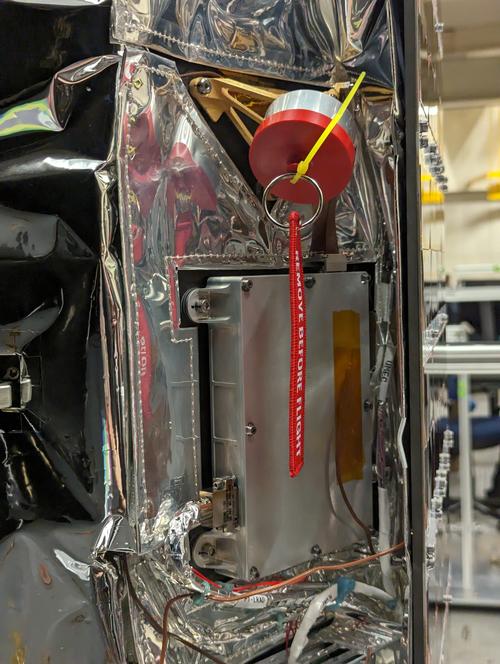Germany flies to the Moon with IM-2
LRAD integrated to Intuitive Machines' µNova Hopper. The LRAD temperature sensor is covered by a red protective cap. (©Intuitive Machines)
News from Feb 26, 2024
On February 22, 2024, the US new space company Intuitive Machines became the first private space company in the world to successfully land on the Moon with its IM-1 "Odysseus" mission. The Institute of Planetary Research at the German Aerospace Center (DLR) and the Freie Universität Berlin are involved in the follow-up mission IM-2, which is due to be launched at the end of 2024, with the measuring instrument LRAD (Lunar Radiometer).
With its IM-2 mission as part of the NASA CLPS program, Intuitive Machines will launch another lunar module Nova-C, a rover and the hopper µNova (Micro-Nova) to the south pole of the Moon to search for water ice, which can also be used as an important resource for the astronauts of the Artemis program. The µNova hopper will separate from the Nova-C landing unit and make a series of short jumps across the lunar surface.
At the south pole of the Moon, the Sun is so low above the horizon that in many craters it casts shadows all year round. In these permanently shadowed regions, the temperatures are so low that water ice can exist stably even in a vacuum over geological periods of time. µNova will jump into one of these regions, where LRAD will measure the surface temperatures and search for sites that are cold enough for stable water ice deposits.
LRAD was integrated into Intuitive Machines' Hopper µNova at the beginning of the year and successfully tested. Thus, a first important milestone on the way to the Moon was achieved.
The Lunar Radiometer was developed and is operated jointly by the Institute of Planetary Research at the German Aerospace Center (DLR) and the Freie Universität Berlin. The project is financially supported by the German Space Agency at DLR on behalf of the Federal Ministry of Economics and Climate Protection (Funding ID 50OW2103).
Science contact: Matthias Grott (Matthias.Grott[at]dlr.de)
